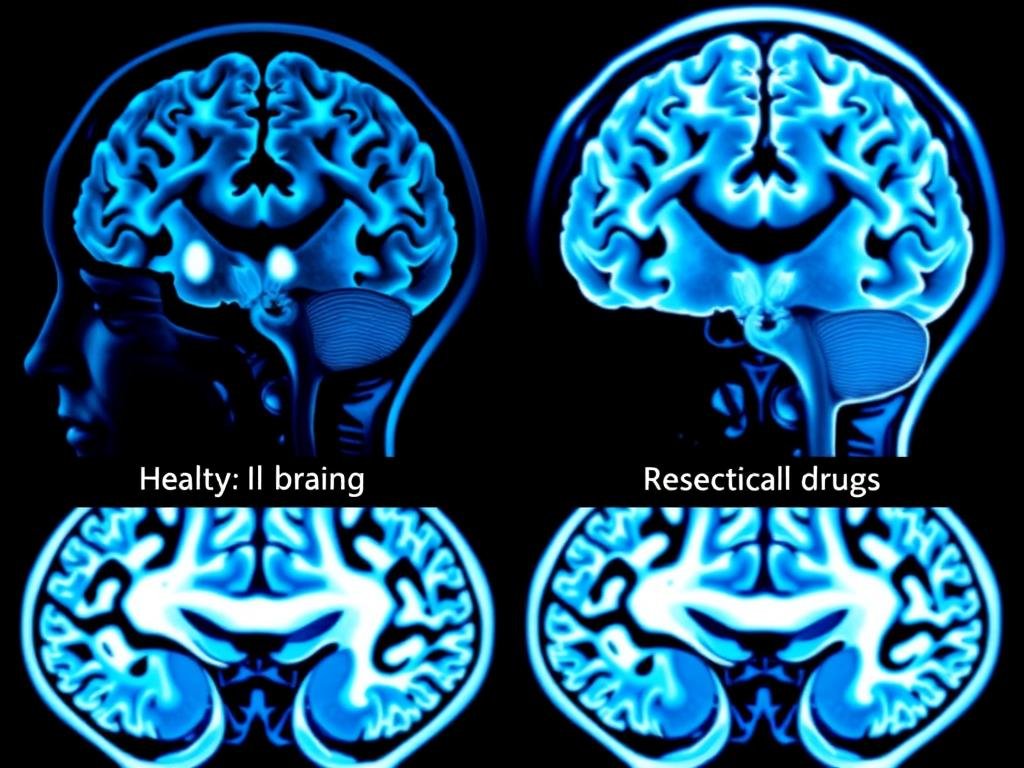5 Critical Health Habits to Stop Before You Turn 40

When Laura turned 39 she sat in my clinic and said, “I used to bounce back from late nights and fast food — now I don’t.” That moment is familiar: your 30s can feel forgiving, but as you get older the same habits start to compound. By the time many people reach their early 40s, the small daily choices of the past decade show up as stubborn weight gain, worse sleep, higher blood pressure, or warning signs on routine blood work. This period is not a sudden cliff; it’s a pivotal window of time where focused change delivers outsized benefits for long-term health and longevity.
If you’re in your 30s (or approaching your 40s), this is the moment to inventory which patterns are working for you — and which are quietly harming your body. The good news is practical: evidence shows that stopping or modifying damaging behaviors in midlife lowers future disease risk and improves overall health. For example, quitting smoking decades earlier dramatically reduces mortality risk, and modifying diet and activity before 40 can lower your chance of developing type 2 diabetes and heart disease later on (see CDC and Harvard Health for overviews on midlife risk and prevention).
This article lays out five high-impact health habits to stop before you turn 40, why each one matters to your long-term wellbeing, and sensible, research-backed replacements you can start today. We’ll cover tobacco cessation, alcohol moderation, recreational drug avoidance, smarter exercise (so you keep muscle without wrecking joints), and ending mindless eating that drives weight and blood-sugar problems.
Cardiovascular risk is a common thread through these habits — if you want to understand how calcium buildup in arteries can raise high blood pressure risk and why early prevention matters, see our explainer on calcium buildup and blood pressure for more context: https://volteguide.com/2025/09/30/calcium-build-up-in-arteries-and-high-blood-pressure-understanding-the-connection/.
This is not about perfection. It’s about one durable change at a time that compounds into better years ahead. Ready to learn the five habits that yield the biggest return on your health investment? Continue reading to discover the practical steps you can apply this week to start feeling and functioning better as you move into your 40s.
Habit 1: Smoking (Stop Completely)

Why Quitting Before 40 Is Critical
I remember a patient in her late 30s who told me she’d kept smoking because “it calmed my stress.” By 39 she was short of breath walking upstairs and terrified that the cough she dismissed for years might be something worse. That scenario is common: what felt manageable in your 20s and early 30s can become a serious health risk as you get older. If you stop smoking before 40, your long-term risk of dying from smoking-related disease falls dramatically — authoritative sources summarize large benefits for those who quit early (see American Cancer Society and CDC for data and guidance).
Smoking harms nearly every organ system. It speeds vascular aging, increases your risk of heart disease, raises cancer risk across multiple sites, impairs lung function, and accelerates visible aging of the skin. Importantly, the body begins to repair itself quickly after the last cigarette: circulation improves within weeks, lung function recovers over months to years, and long-term mortality risk drops substantially for those who quit in midlife. For clinicians and patients alike, the message is clear: quitting now meaningfully reduces future risk and improves overall health.
“People who quit smoking before age 40 reduce their chance of dying prematurely from smoking-related diseases by about 90 percent.”
How Smoking Ages Your Body
Short version: smoking increases inflammation, damages blood vessels, and impairs oxygen delivery — all of which raise blood pressure, worsen cholesterol profiles, and accelerate plaque formation. Over years this translates into higher risk for heart attacks, strokes, chronic obstructive pulmonary disease (COPD), and multiple cancers.
Immediate and Long-Term Benefits After Quitting
- Within 20 minutes: heart rate and blood pressure begin to normalize.
- Within weeks to months: circulation and lung function improve; shortness of breath decreases.
- Within 1–10 years: risk of coronary heart disease and many cancers falls substantially.
(Sources: CDC smoking cessation pages; American Cancer Society summaries.)
Steps to Break the Habit
I often tell my patients that quitting is a process, not a single perfect day. Expect setbacks, and plan for them.
- Talk with your doctor about evidence-based cessation aids — nicotine replacement (patches, gum), prescription medications (varenicline or bupropion) and which option fits your medical history.
- Use coaching and support: call a quitline (1-800-QUIT-NOW in the U.S.), join a support group, or try a structured app-based program.
- Identify triggers (stress, alcohol, driving) and build alternative coping strategies like brief walks, breathing exercises, or chewing sugar-free gum.
- Set a realistic quit date, tell a close friend or family member, and create an accountability plan.
- If you slip, use it as information — what prompted it, and how will you handle that trigger next time? Many successful quitters report multiple attempts before long-term success.
When to Talk to a Doctor
See your clinician before starting medications if you have heart disease, are pregnant, or take other prescriptions. If you notice new or worsening symptoms (chest pain, significant shortness of breath, unexplained weight loss), seek evaluation promptly.
Ready to Quit Smoking?
If you want reputable starting points, the CDC quit resources and the National Cancer Institute provide free tools and guidance. Combine clinician support with behavioral coaching for the best chance of lasting success.
Habit 2: Excessive Alcohol Consumption (Reduce/Stop)

What Counts as “Excessive”?
I meet people in their late 30s who tell me a nightly glass of wine helps them unwind — and it often does. But what feels like a harmless ritual can quietly raise your long-term risk as you get older. Medical guidance defines moderate drinking as up to one standard drink per day for women and up to two for men; drinking more than that on a regular basis is considered excessive and increases risk for multiple conditions (see CDC alcohol guidelines).
What a “Standard Drink” Actually Is
- 12 ounces of regular beer (about 5% alcohol)
- 5 ounces of wine (about 12% alcohol)
- 1.5 ounces of distilled spirits (about 40% alcohol)
Knowing these measures helps you track intake accurately rather than estimating pours that often exceed a single drink.
Why Alcohol Matters More as You Approach 40
As metabolism and liver function subtly change with age, alcohol’s effects can become more pronounced. Regular drinking elevates the risk of certain cancers (breast, liver, digestive tract), contributes to high blood pressure and heart disease, and increases the chance of atrial fibrillation — an irregular heartbeat linked to stroke risk. Alcohol also disrupts sleep architecture, worsens blood-sugar control for people with diabetes or prediabetes, and can accelerate cognitive aging over decades.
Health Risks of Regular Drinking:
- Increased cancer risk (including breast cancer in women even at moderate levels)
- Higher likelihood of developing heart disease and high blood pressure
- Greater chance of atrial fibrillation (irregular heartbeat)
- Possible acceleration of cognitive decline
- Disrupted sleep and poorer metabolic control
Women and Alcohol: A Special Note
Women are more susceptible to alcohol-related harm at lower amounts than men. Even moderate drinking is associated with modestly higher breast cancer risk, and body composition differences mean alcohol achieves higher blood levels in many women. If you’re a woman in your 30s, reassess whether that nightly drink is worth the tradeoffs for long-term health.
Practical Moderation and Harm-Reduction
You don’t have to go from nightly drinks to zero overnight — unless you have alcohol use disorder, in which case professional help is recommended. Try these realistic strategies to cut down and protect your heart and brain:
Moderation Strategies
- Set a weekly drink limit (e.g., no more than 7 drinks/week for women, 14 for men) and track it.
- Reserve alcohol for special occasions rather than daily use.
- Measure pours and use smaller glasses to avoid accidental overpouring.
- Alternate alcoholic drinks with water or nonalcoholic beverages.
Alcohol-Free Alternatives
- Experiment with premium nonalcoholic beers and wines.
- Try craft mocktails, kombucha, or sparkling water with citrus and herbs.
- Replace the ritual (glass in hand) with a relaxing nonalcoholic routine—tea, a short walk, or a breathing exercise.
Alcohol, Sleep, and Blood Sugar
Alcohol can help you fall asleep faster but fragments restorative REM sleep, leaving you tired the next day. For people with insulin resistance or type 2 diabetes, drinking also affects glucose metabolism — sometimes causing low blood sugar or masking symptoms. If weight, sleep, or blood-sugar control are emerging issues as you age, alcohol reduction is a high-leverage change.
When to Seek Help
If you suspect your drinking is more than casual — you rely on it to relax, hide stress, or you’ve had blackouts or withdrawal symptoms — talk with your doctor. Simple screening tools like the AUDIT-C questionnaire can help identify risk, and resources such as SAMHSA or local addiction services provide confidential help.
Reassess Your Relationship with Alcohol
If you want a trustworthy starting point, review the CDC alcohol guidelines and consider a brief self-assessment (AUDIT-C) or speak with your clinician about your drinking and heart disease risk.
Habit 3: Using Recreational Drugs (Stop Completely)

Cannabis and Cognition: What I See in Clinic
I often tell my patients about a 37-year-old teacher who used cannabis nightly for years and began noticing memory lapses and trouble planning lessons — small problems at first that steadily worsened. That kind of gradual decline is what researchers worry about: while casual, infrequent use is different, frequent long-term cannabis use has been linked in some studies to poorer memory, attention, and executive function over time. As you get older, preserving cognitive reserve matters: the cumulative effect of decades of substance exposure can make age-related decline more noticeable and harder to reverse.
Cannabis — What the Evidence Says
Recent cohort studies and systematic reviews suggest an association between heavy, long-term cannabis use and cognitive deficits, though the magnitude and permanence vary by study and by age of onset. If you or someone you care about uses cannabis daily or near-daily, be mindful that stopping or reducing use is one of the most straightforward ways to protect long-term cognitive health.
Stimulants and the Heart
Stimulant drugs — including cocaine, methamphetamine, and the nonmedical use of prescription stimulants — carry clear cardiovascular risks. In my practice I’ve seen otherwise healthy people in their 30s present with arrhythmias, chest pain, or elevated blood pressure after intermittent stimulant use. These agents increase heart rate, constrict blood vessels, and can trigger heart attacks or strokes even in younger adults. By your 40s, cumulative exposure plus age-related vascular changes raise the stakes.
Warning Signs Your Body May Be Impacted
- New or worsening palpitations, chest discomfort, or shortness of breath
- Persistent anxiety, panic attacks, or emotional instability
- Memory problems, confusion, or difficulty concentrating at work
- Sleep that doesn’t restore you even when sober
- Frequent mood swings or unexplained social withdrawal
When Recreational Use Becomes a Medical Concern
Recreational use becomes problematic when it interferes with work, relationships, or health, or when you find it hard to stop despite wanting to. If you experience withdrawal, tolerance (needing more to get the same effect), or risky behavior while using, these are red flags. Talk to your doctor — early intervention reduces long-term harm and expands treatment options.
Practical Steps Toward Recovery and Harm Reduction
Stopping completely is the safest path, but realistic plans and medical support make that process far more achievable. Here are evidence-based, practical steps:
- Be honest with yourself about frequency and impact — tracking use for two weeks can reveal patterns.
- Consult a healthcare provider experienced in addiction medicine to discuss tapering strategies, medication-assisted treatment (where applicable), and safe detox plans.
- If immediate cessation isn’t possible, reduce frequency and avoid combining substances (e.g., alcohol plus stimulants), which increases cardiovascular risk.
- Develop healthier coping tools: structured exercise, cognitive behavioral therapy, mindfulness, and peer support groups.
- Plan for safety: don’t use alone, have a trusted contact, and seek emergency care for chest pain, severe agitation, or suicidal thoughts.
Where to Get Help
Trusted resources exist to guide you confidentially. The Substance Abuse and Mental Health Services Administration (SAMHSA) maintains a national helpline and treatment locator, and many communities have outpatient addiction medicine clinics and cognitive-behavioral therapy programs that work well for stimulant and cannabis dependence.
Concerned About Drug Use?
If you’re worried about how drug use is affecting your health, reach out for confidential support — early help improves outcomes and protects your heart, brain, and overall health as you move into your 40s.
Habit 4: Over-Exercising (Modify Intensity and Type)

The Runner Who Couldn’t Recover
One of my patients, a devoted marathoner in his late 30s, came in complaining of chronic knee pain and recurring stress fractures despite reducing mileage. He’d assumed more training always meant more fitness; instead, accumulated impact and insufficient recovery had left him sidelined. Stories like his are common: as you get older, the balance between training and recovery shifts, and what once felt like sustainable workload can become a pathway to injury and long-term joint problems.
When Exercise Is Too Much
Exercise remains essential for healthy aging, strength, and longevity — but too much of the wrong type (or too little recovery) creates risk. High-impact activities such as repetitive long-distance running on hard surfaces can increase wear on hips, knees, and ankles. Over time this may contribute to earlier-onset osteoarthritis or increase the likelihood of needing joint procedures. Conversely, lifting extremely heavy weights without appropriate progression or recovery can spike blood pressure acutely and stress the heart, especially in people with undiagnosed cardiovascular conditions.
How to Evaluate Your Training
Warning Signs You May Be Overtraining
- Persistent joint pain that doesn’t improve with rest
- Decreased performance despite higher training volume
- Frequent injuries, stress fractures, or recurring strains
- Chronic fatigue, mood changes, or disrupted sleep
- Illness that lingers or slow recovery between sessions
Simple Self-Checks
- Track resting heart rate trends — a persistent rise suggests poor recovery
- Notice if workouts feel harder than usual at the same intensity
- Perform a movement screen (squat, single-leg balance) to spot asymmetries
- Keep a training log and note patterns around injury or pain
Joint-Friendly Training: Keep Cardio, Protect Cartilage
You don’t need to stop running entirely, but shift the balance to protect joints and preserve long-term function. Replace some high-impact sessions with low-impact alternatives and prioritize cross-training.
- Limit long, high-impact runs to 1–2 times per week; make the rest of your aerobic training lower-impact (cycling, swimming, elliptical).
- Run on softer surfaces like trails or tracks and rotate shoes regularly to reduce repetitive stress.
- Include active recovery days — brisk walks, mobility drills, or light swimming.
- Cross-train to build aerobic capacity without pounding joints.
Strength Training: Preserve Muscle Mass Without Excessive Risk
Maintaining muscle mass becomes crucial as you age; it supports bone health, metabolic rate, and injury resilience. But the way you train for strength should adapt with time and goals.
Smarter Strength Training Approach:
- Prioritize technique and progressive overload over maximal lifts — quality beats ego lifting.
- Use moderate loads with higher repetitions (8–15 reps) to build strength and muscle mass while minimizing extreme blood-pressure spikes.
- Include compound movements (squat, hinge, push, pull) plus mobility and stability work.
- Allow 48–72 hours between intense strength sessions for the same muscle groups to promote recovery.
For people with known high blood pressure, heart disease, or risk factors, consult your doctor before attempting very heavy lifts. If you want to learn more about how blood pressure and arterial health interact with exercise intensity, see our explainer on calcium buildup and high blood pressure for context: https://volteguide.com/2025/09/30/calcium-build-up-in-arteries-and-high-blood-pressure-understanding-the-connection/.
Sample Weekly Plan for Late 30s to Protect Joints and Maintain Strength
- 3 days moderate aerobic (30–45 minutes: cycling, brisk walking, elliptical)
- 2 days strength training (full-body sessions focusing on technique, 8–12 reps)
- 1 day low-impact long session (easy bike or swim)
- 1 active recovery day (mobility, yoga, short walk)
This template balances cardiovascular health, muscle maintenance, and recovery — keys for healthy aging and longevity.
When to See a Professional
If you experience persistent joint pain, recurring stress fractures, or symptoms like chest pain or undue breathlessness during lifting, see a physician or sports medicine specialist. A physical therapist can assess movement patterns and prescribe joint-friendly exercises that preserve bone and muscle while reducing injury risk.
Need a Joint-Friendly Fitness Plan?
Download a quick mobility-screen checklist and a two-week joint-friendly training template to protect your muscles and bones while keeping you strong.
Habit 5: Mindless Eating (Adopt Simple Dietary Rules)

The Moment You Notice the Scale and the Mirror
I recently spoke with a 38-year-old client who said, “I haven’t changed much since my 20s, but now nothing fits.” That’s a common story: metabolism slows slightly with age, activity levels often drop, and the same eating patterns that were forgiving in your 20s and early 30s begin to show up as steady weight gain, worse blood-sugar control, and less energy. This decade — the late 30s into the 40s — is a critical time to stop mindless eating and reclaim metabolic health for long-term benefits.
Sugar, Blood Sugar, and Diabetes Risk
Mindless snacking and frequent consumption of sugary drinks or refined carbs drive spikes in blood sugar and insulin. Over years, these patterns increase the risk of insulin resistance and type 2 diabetes. Proven prevention studies (for example, the Diabetes Prevention Program) show that modest weight loss and structured dietary changes in midlife substantially lower diabetes risk — making dietary changes before 40 especially powerful.
Foods to Eliminate or Severely Restrict
Foods to Stop Before 40
- Fast food: High in trans fats, excess sodium, and ultra-processed ingredients that promote weight gain and metabolic dysfunction.
- Sugary drinks: Sodas, energy drinks, and many sweetened specialty coffees — empty calories that spike blood sugar.
- Processed meats: Bacon, hot dogs, and some deli meats — linked to higher risk of heart disease and other conditions.
- Refined white-flour products: Pastries, white bread, and many packaged snacks that lack fiber and satiety.
- Mindless packaged snacks: Large-portion chips and candy that encourage overeating.
Healthier Alternatives
- Home-cooked meals: Controlling ingredients reduces hidden sugar, salt, and unhealthy fats.
- Water, unsweetened tea, or black coffee: Replace sugary beverages to lower daily sugar intake.
- Whole proteins and plant-based options: Fish, poultry, legumes, tofu for stable blood sugar and muscle maintenance.
- Whole grains and fiber: Brown rice, quinoa, oats, and whole-wheat options for better satiety.
- Smart snacks: Greek yogurt with berries, handful of nuts, or hummus with vegetables.
Portion Control and Plate Rules
Instead of chasing fad diets, follow practical rules that reduce accidental overeating and support steady metabolism:
- Plate method: Half vegetables, one-quarter lean protein, one-quarter whole grains — simple and effective for weight and blood-sugar control.
- Eat real food: If a product has a long ingredient list full of unpronounceable items, treat it as an occasional food, not a staple.
- Kitchen curfew: Stop eating about three hours before bed to improve sleep quality and reduce late-night calorie intake.
- Mindful meals: Sit without screens, chew slowly, and pause between bites — this reduces intake and improves satisfaction.
- Plan weekly meals: A short weekly shop and simple recipes cut impulsive choices that often favor ultra-processed foods.
Protein, Muscle Mass, and Metabolism After 30
Preserving muscle mass is a cornerstone of metabolic health as you age. Aim for adequate protein at each meal — roughly 20–30 grams per sitting for most adults — and combine that with regular strength training to support muscle mass, bone health, and resting metabolic rate. This helps prevent the gradual weight creep many notice in their 30s and 40s.
Simple Swaps: A One-Day Sample and Snack Swaps
Example one-day plan to demonstrate practical swaps:
- Breakfast: Oatmeal with milk or a plant alternative, topped with nuts and berries (fiber + protein).
- Lunch: Large salad with mixed greens, grilled chicken or chickpeas, quinoa, olive oil vinaigrette.
- Snack: Greek yogurt with a small handful of walnuts or an apple with nut butter.
- Dinner: Baked salmon, roasted vegetables, and brown rice.
Three snack swaps to try: replace a bag of chips with air-popped popcorn and a piece of fruit; swap a sugary granola bar for plain Greek yogurt with cinnamon; replace a soda with sparkling water and lemon.
Gout, Uric Acid, and Food Choices
If you suffer gout or painful uric-acid attacks, avoid or limit certain foods that provoke flares — processed meats and sugary drinks are common culprits. For more guidance on foods to avoid with gout, see this detailed guide: https://volteguide.com/2025/10/01/avoid-these-5-healthy-foods-if-you-suffer-from-painful-gout-attacks-uric-acid-alert/.
When to Screen for Diabetes
If you have risk factors — family history, excess weight, or high blood pressure — ask your doctor about a diabetes risk screen or an A1C test. Small, sustained changes in diet and activity can dramatically reduce your chance of progressing to type 2 diabetes.
Transform Your Eating Habits
Take a quick diabetes-risk quiz (ADA risk test) and download a 7-day reset plan with simple recipes, snack swaps, and a short grocery list to get started.
Taking Action Before 40: Your Health Transformation Plan

The window before turning 40 is a rare stretch of time when targeted changes deliver outsized returns for your long-term health. The five habits covered here—smoking, excessive alcohol, recreational drugs, over-exercising without recovery, and mindless eating—each contribute to risk for heart disease, diabetes, joint problems, and cognitive decline as you get older. The good news: meaningful improvements are possible and realistic when you act deliberately.
Start with a simple 30/60/90-day roadmap: in the first 30 days pick one habit to tackle (for example, cut nightly drinks to weekends); by 60 days add a new supportive behavior (begin a joint-friendly strength routine or replace sugary snacks); by 90 days consolidate those changes into routine so they persist as you move into your 40s. I often see patients who begin with one small change and within months notice better sleep, lower weight, and improved energy — real momentum that protects overall health.
For practical next steps and reliable screening tools, review CDC lifestyle resources and consider an AHA risk check for cardiovascular health. If you have specific concerns—hormonal insomnia, mood swings, or stubborn weight—see guidance on hormone balance and sleep-support strategies here: https://volteguide.com/2025/10/03/hormone-balance-for-menopause-stop-insomnia-belly-fat-mood-swings-naturally/. If diet-related issues like gout or uric-acid flares are part of your picture, consult this dietary guide: https://volteguide.com/2025/10/01/avoid-these-5-healthy-foods-if-you-suffer-from-painful-gout-attacks-uric-acid-alert/. For cardiovascular prevention and how arterial calcium affects blood pressure, review: https://volteguide.com/2025/09/30/calcium-build-up-in-arteries-and-high-blood-pressure-understanding-the-connection/.
“It’s never too late to be what you might have been.”
Ready for an immediate micro-action? Download a one-page starting checklist, pick the single habit you will change this week, and schedule one appointment with your doctor or a coach to create accountability. Small, consistent steps add up — and they change how you get older. Continue reading the sections above for practical, evidence-backed guidance on each habit and how to implement the change plan that fits your life.
Ready for Your Health Reset?
Start today: get the 1-page checklist, a 30/60/90 plan template, and links to trusted resources to help you take the first step.




